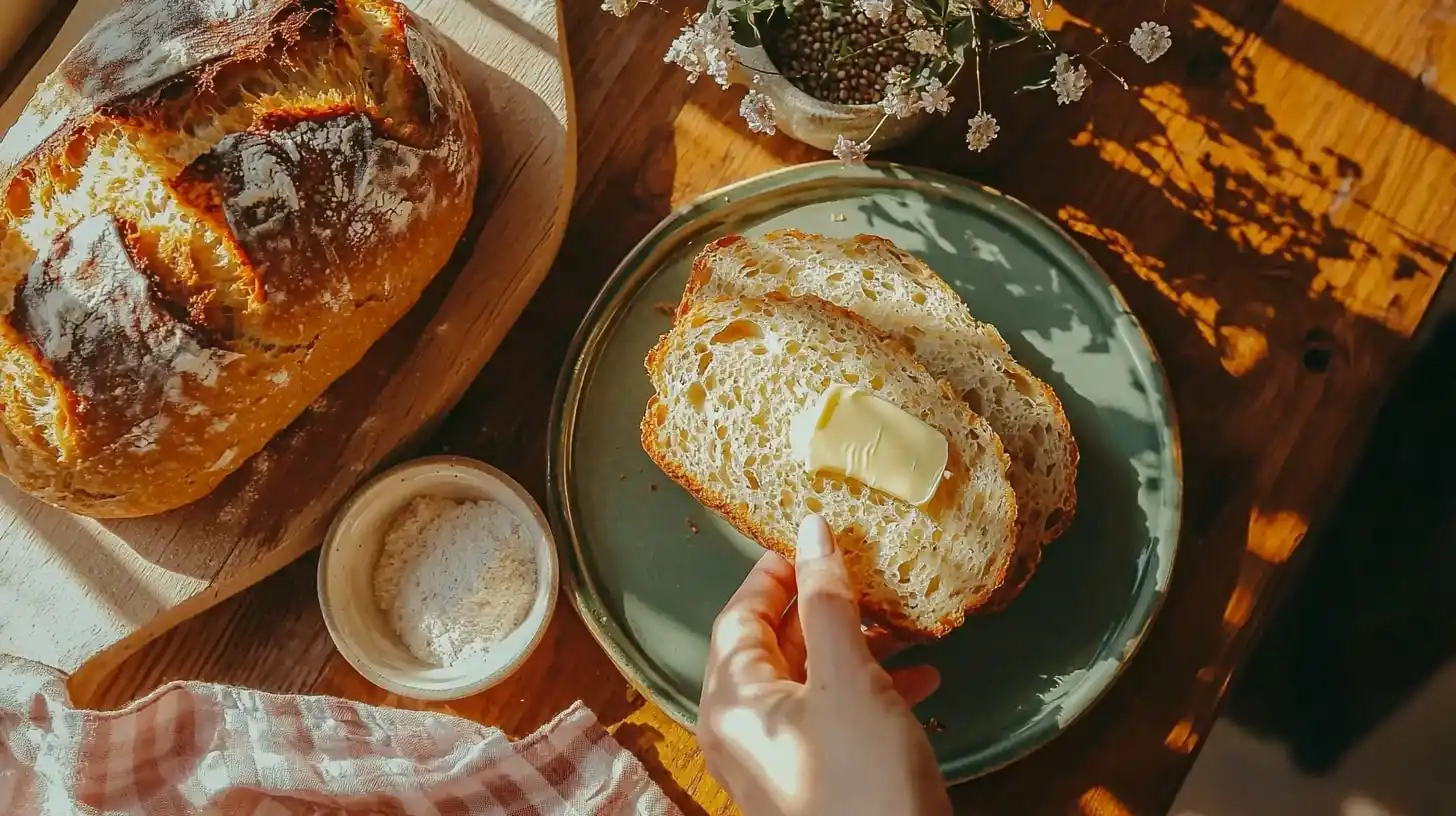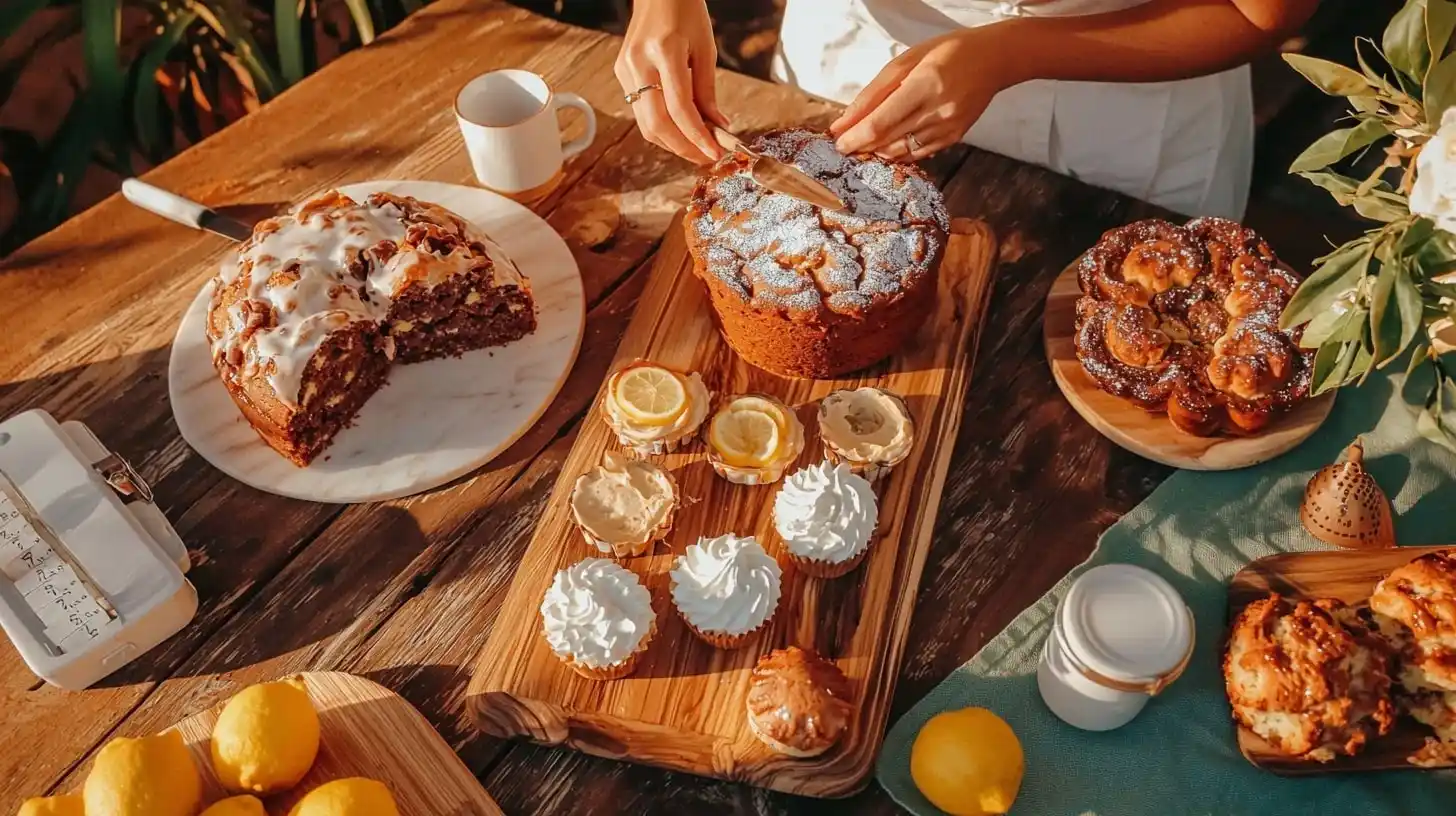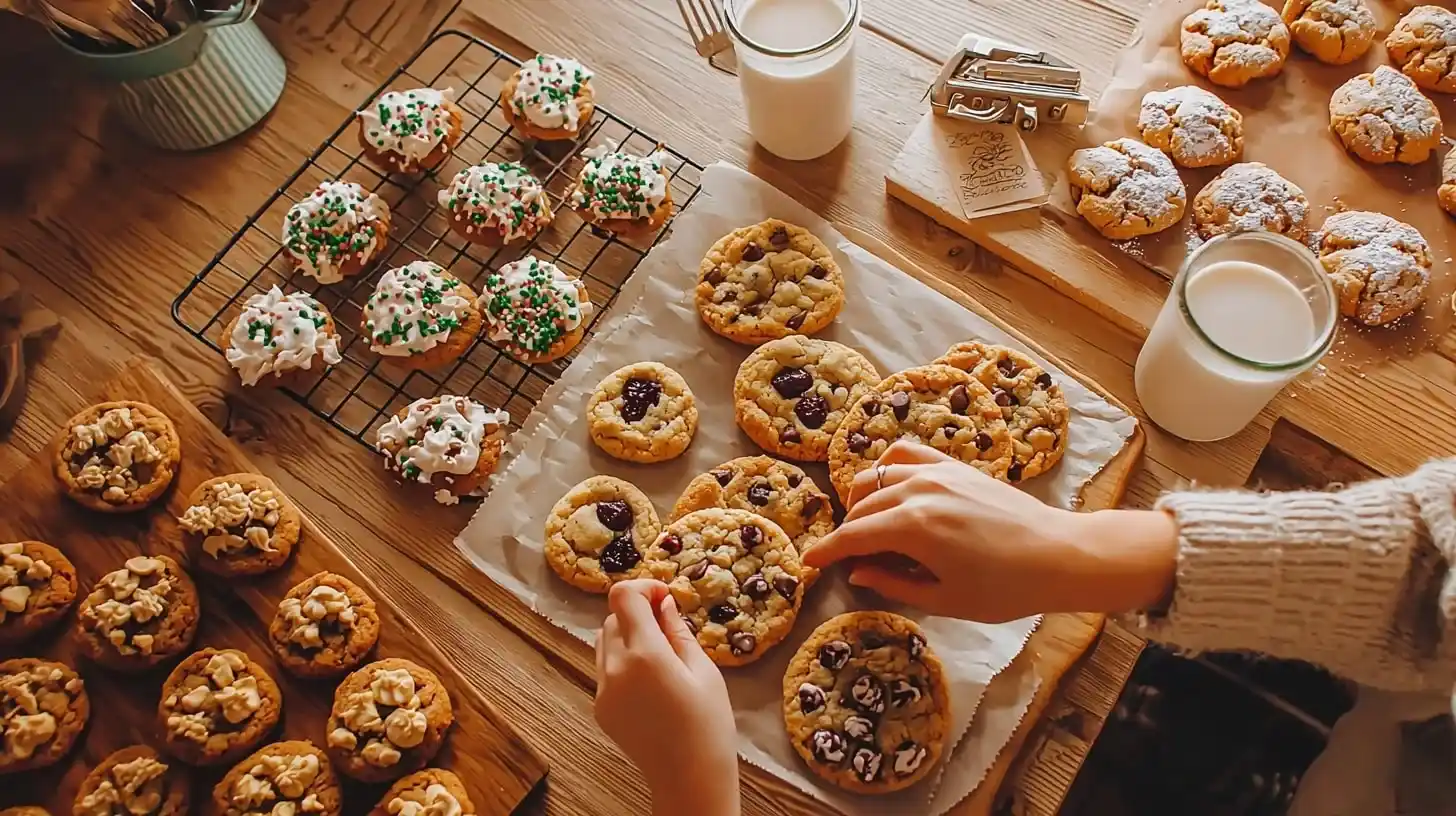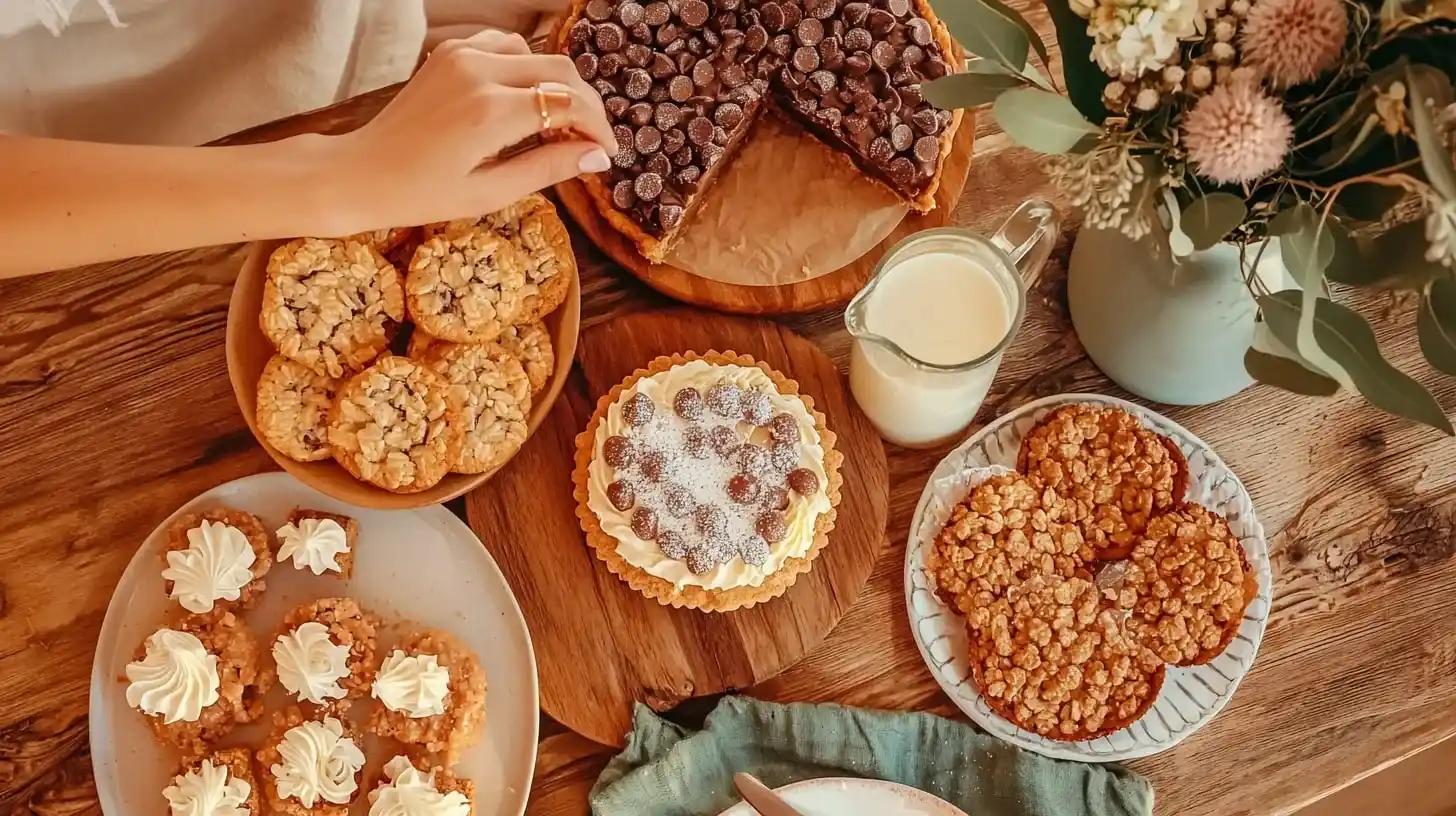When I started developing my Gluten Free Monkey Bread recipe, I quickly discovered that gluten-free baking isn’t simply about swapping out regular flour for a gluten-free alternative. The journey to creating soft, flavorful bread without gluten requires understanding some fundamental tricks that transform dense, crumbly disappointments into bread that even gluten-lovers enjoy.What Is the Trick to Making Good Gluten-Free Bread?.
My first gluten-free bread attempt was a disaster that my youngest son kindly described as “maybe good for building houses.” We laughed together as the dense brick sat heavily on our cutting board, but I was determined to master the techniques that would make gluten-free bread not just acceptable, but genuinely delicious.
Table of Contents
Why This Question Matters What Is the Trick to Making Good Gluten-Free Bread?
Understanding the tricks to good gluten-free bread matters deeply for several reasons:
- Health necessity: For those with celiac disease or gluten sensitivity, quality bread shouldn’t be a sacrifice
- Family inclusion: Creating bread everyone enjoys means no one feels singled out at family meals
- Baking confidence: Mastering these techniques empowers home bakers to adapt favorite recipes
As my grandmother from Kentucky would say, “Bread is more than food – it’s comfort on a plate.” Her wisdom rings particularly true for those navigating a gluten-free lifestyle, where finding that comfort often requires extra knowledge and care.
The Essential Tricks for Successful Gluten-Free Bread
The hallmarks of successful gluten-free bread: golden crust, soft interior crumb, and the specialty ingredients that make it possible!
Embrace Flour Blends, Not Single Flours
The single most transformative trick I’ve discovered is that successful gluten-free bread requires a thoughtful blend of flours and starches – never just one type. My earliest failures came from attempting to use only rice flour, resulting in gritty, dense bread that crumbled at the slightest touch.
A good blend typically includes:
- Rice flour (white, brown, or sweet white for different flavors and textures)
- A protein-rich flour (such as sorghum, millet, or quinoa)
- Starches (tapioca, potato, or arrowroot) to lighten the texture
- Sometimes almond or coconut flour for flavor and moisture
My husband, initially skeptical about gluten-free baking, now requests my homemade bread over store-bought after I perfected my blend. “It doesn’t taste like compromise,” he noted – perhaps the highest compliment a gluten-free bread can receive.
Add Structure with Binders
Without gluten’s natural elasticity and binding properties, gluten-free bread needs help maintaining structure. The right binders transform the texture from crumbly to cohesive:
- Xanthan gum (usually ¼ teaspoon per cup of flour)
- Psyllium husk powder (my personal favorite for chewier bread)
- Ground flaxseed combined with water
- In some recipes, an extra egg beyond what traditional recipes call for
My middle child, who once built “crumb mountains” from my earlier gluten-free attempts, was astonished when I finally achieved the right balance. “Mom, it doesn’t fall apart when I butter it!” she exclaimed – a moment of victory every gluten-free baker understands.
Increase Moisture and Fat Content
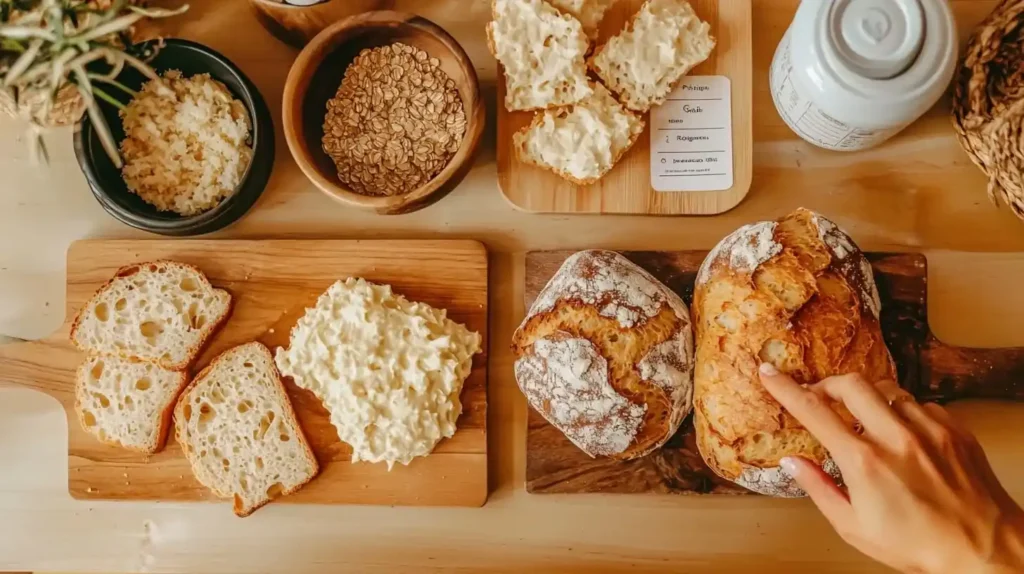
The difference is in the details: see how precision, temperature control, and patience transform gluten-free bread from dense and crumbly to light and delicious!
Gluten-free flours absorb more moisture than wheat flour, which is why many early attempts result in dry, crumbly bread. These moisture adjustments make a profound difference:
- Add approximately 20% more liquid than in traditional recipes
- Incorporate “wet” ingredients like yogurt, sour cream, or applesauce
- Don’t be afraid of additional fat through butter, oil, or egg yolks
- Consider adding honey, which not only sweetens but helps retain moisture
My Kentucky grandmother always said you can tell good bread by the condensation on the knife after cutting, and this holds true for gluten-free varieties too. When I finally achieved that moisture balance, my gluten-free bread passed her test even though she never baked without wheat in her lifetime.
Master Temperature Sensitivity
Temperature control proved to be one of the most surprising factors in my gluten-free bread journey:
- Liquids should be warmer than in traditional bread (about 110-115°F)
- The rising environment needs to be warmer and more humid
- Many gluten-free breads benefit from starting in a hotter oven (425°F) then reducing temperature (to 350°F) partway through baking
My sister (a traditional bread baker) noticed that my kitchen rituals changed completely for gluten-free baking. “You’re like a scientist with these temperature checks,” she observed during a visit. The precision pays off in properly risen loaves that bake evenly from crust to center.
Embrace Precision Measurement
While traditional bread baking often allows for intuitive adjustments, gluten-free baking demands precision:
- Measure by weight (grams) rather than volume
- Maintain consistent ratios between flours, liquids, and binders
- Follow time guidelines carefully for mixing, rising, and baking
My oldest son, who helps in the kitchen, has learned to appreciate the science behind this precision. “It’s like a chemistry experiment where you get to eat the results,” he observed while carefully weighing tapioca starch.
Adjust Rising Expectations
Gluten-free bread requires different rising techniques for success:
- Only let it rise once (unlike traditional bread’s double rise)
- Don’t expect it to double in size – a 50% increase is often the goal
- Use a warm, draft-free location with added humidity (I place a pan of hot water below the rising bread)
- Be patient – it often takes longer than wheat bread to show progress
The rising phase was where I nearly gave up on gluten-free bread entirely, until a fellow mother with celiac disease shared her humidity trick. “The dough needs a little spa treatment,” she laughed, describing her steamy rising environment. The difference was immediate and remarkable.
For more information about the specific challenges of gluten-free baking, you might find What is the biggest challenge of making gluten-free bread? helpful for understanding the science behind these techniques.
The true trick to making good gluten-free bread might simply be persistence and a willingness to rethink everything you know about traditional bread baking. Each failed loaf teaches something valuable – my early “brick bread” showed me the importance of protein structure, while overly moist attempts highlighted the need for balance.What Is the Trick to Making Good Gluten-Free Bread?.
When teaching my children about gluten-free baking, I emphasize that different never means lesser – just adapted to different needs. “Bread has been reinvented countless times throughout history,” I tell them as we mix our carefully measured ingredients. “We’re just part of its continuing story.”What Is the Trick to Making Good Gluten-Free Bread?.
With warmth, Sophia

